Advocating For Farmer-Led
Water Quality Initiatives.


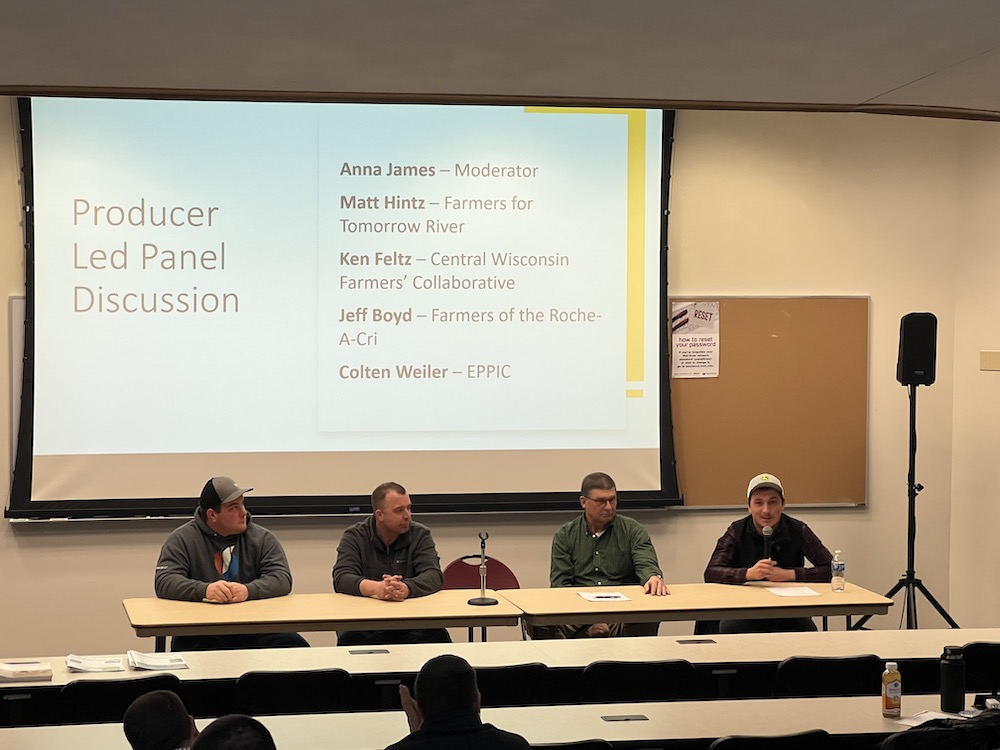
Producer Led Watershed Protection Panel Discussion
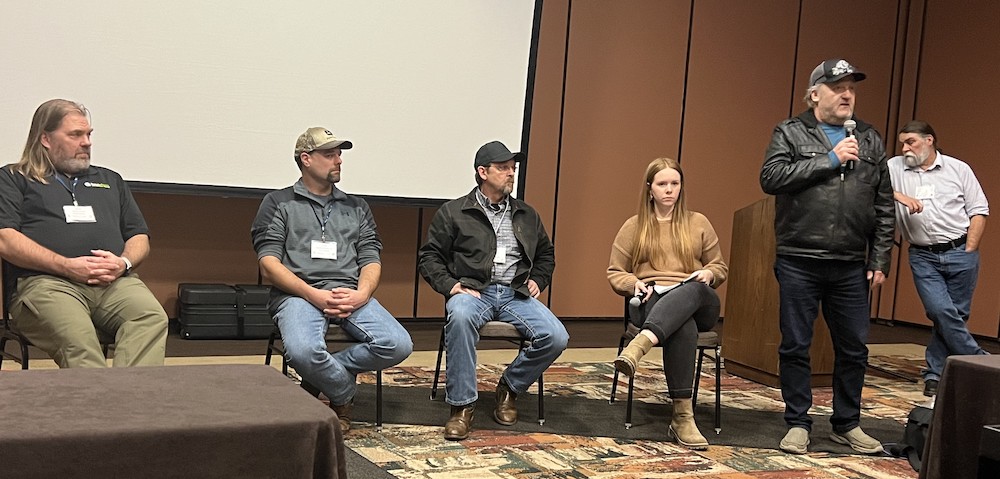
Growers Describe Value of Producer-Led Watershed Protection Grant Program
Committed to Clean Water
Our industry is one of traditions, and it’s also one of innovation and ingenuity. Our great grandfathers were crystal clear in their agricultural beliefs: “protect the land and protect the water for without both of them, your life as a farmer will be forever forgotten.” That directive is handed down from one generation to the next.
Each day, farmers are leading efforts to preserve our state’s natural resources. We have researched, we have tested, and we have implemented water conservation programs and practices. This makes our farmers some of the most widely-admired conservationists, and our farms some of the most sustainable, in the agricultural community.
Voluntary conservation practices, groundwater monitoring, state-of-the-art technology, and applied research are the focal points of Wisconsin Potato and Vegetable Growers Association’s efforts. We are committed to doing our part to preserve and protect our state’s water resources for current and future generations.
The commitment to our mission includes direct conversations and testimony to legislative leaders in support of key legislation that will help ensure clean water for all Wisconsinites.
Press Release on Farmer-Led Conservation Support Bill Signed by Governor Evers
Members of four central Wisconsin Producer-Led Watershed Protection Grant groups participated in a panel discussion at the Central Wisconsin Farm Profitability Expo held March 22 in Wisconsin Rapids. Pictured are: (L-R) Matt Hintz of the Farmers for Tomorrow River, Jeff Boyd of Farmers of the Roche-A-Cri, Ken Feltz of the Central Wisconsin Farmers Collaborative, and Colten Weiler of the Eau Plaine Partnership for Integrated Conservation. Each talked about practices they are using to improve the watersheds in which they farm.
Several potato and vegetable growers recently participated in a panel discussion on the value of the Producer-Led Watershed Protection Grant Program offered by the Wisconsin Dept. of Agriculture. Pictured are (L-R) Andy Diercks of Coloma Farms (Farmers of the Roche-A-Cri); Tom Schultz of Heartland Farms (Farmers of the Roche-A-Cri); Randy Fleishauer of Plover River Farms (Central Wisconsin Farmers Collaborative); Anna James, Natural Resources Educator with UW-Extension (Moderator); Curt Soik of Myron Soik & Sons (Central Wisconsin Farmers Collaborative); and Tracy Hames, Executive Director of the Wisconsin Wetlands Association (Moderator). The panel discussion took place in February of 2023 as part of the WPVGA Grower Education Conference held in Stevens Point. The growers explained how the Producer-Led program has fostered the sharing of ideas and improved conservation practices on farms in central Wisconsin.
WPVGA Farms Participate in Producer-Led Watershed Protection Grants
Eight WPVGA-member farms in central Wisconsin are working together on a Producer-Led Watershed Protection Grant project to protect the watershed that includes the Little Plover River and a portion of the Wisconsin River. This group includes lead farm Plover River Farms, along with Feltz Family Farms, Firkus Farms, Gagas Farms, Hamerski Farms, Myron Soik & Sons, Okray Family Farms and Worzella & Sons. With matching funds from the WPVGA and working closely with UW Extension and the Wisconsin Wetlands Association, the group was successful in securing a fourth grant from the Wisconsin Dept. of Agriculture, Trade and Consumer Protection following successful conservation work in 2023.
Conservation practices employed by the group include the extensive use of cover crops, prairie and pollinator plantings, and no-till/minimum till practices. There were also extensive wetlands restoration practices employed in this watershed.
An additional Producer-Led group received its second round of grant funding in 2023 in the Central Sands: Farmers of the Roche-A-Cri. This Producer-Led group has members representing Coloma Farms, Signature Farms, ZanBria Artisan Farms, Heartland Farms, Horizon Cranberry Farms, Nathan Bula Farms LLC, Sterling Farms and Flyte Family Farms. The WPVGA is proud to see more member farms participating in the Producer-Led Watershed Protection Grant program.
Read more about the grant program here.
Join Us
We’re committed to protecting Wisconsin’s water resources. Add your name to the growing list of farmers, ag leaders, and citizens working to ensure a healthy freshwater future across the state. Your help makes a difference!
Initiatives
WPVGA is proud to be part of a series of initiatives that work toward sustainable groundwater quantity and quality. These efforts evaluate and implement strategies to increase the efficiency of irrigation and crop production, while conserving the amount of water used and maintaining or improving water quality.
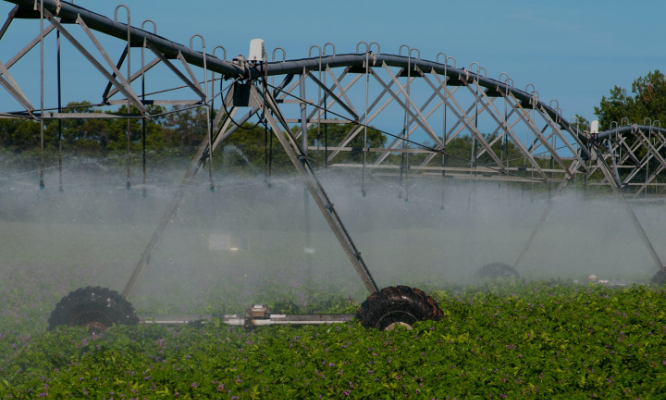
Irrigation and Conservation Practices
Learn More >
The Little Plover River Watershed Enhancement Project
Learn More >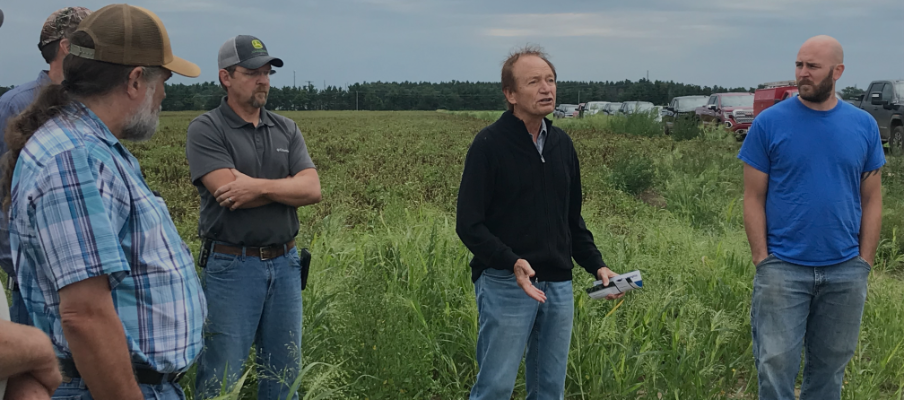
Producer-Led Watershed Protection
Learn More >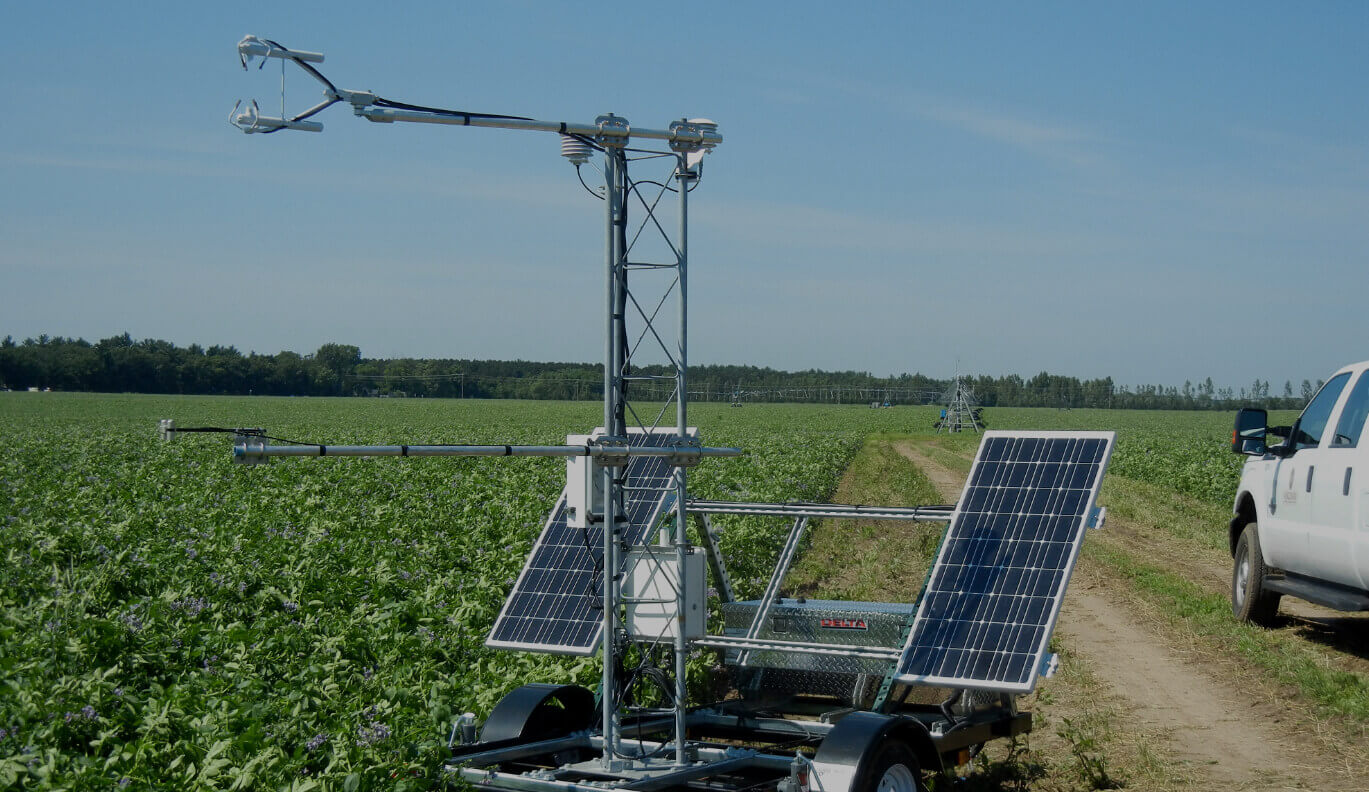
A Commitment to New Approaches and Technologies
Learn More >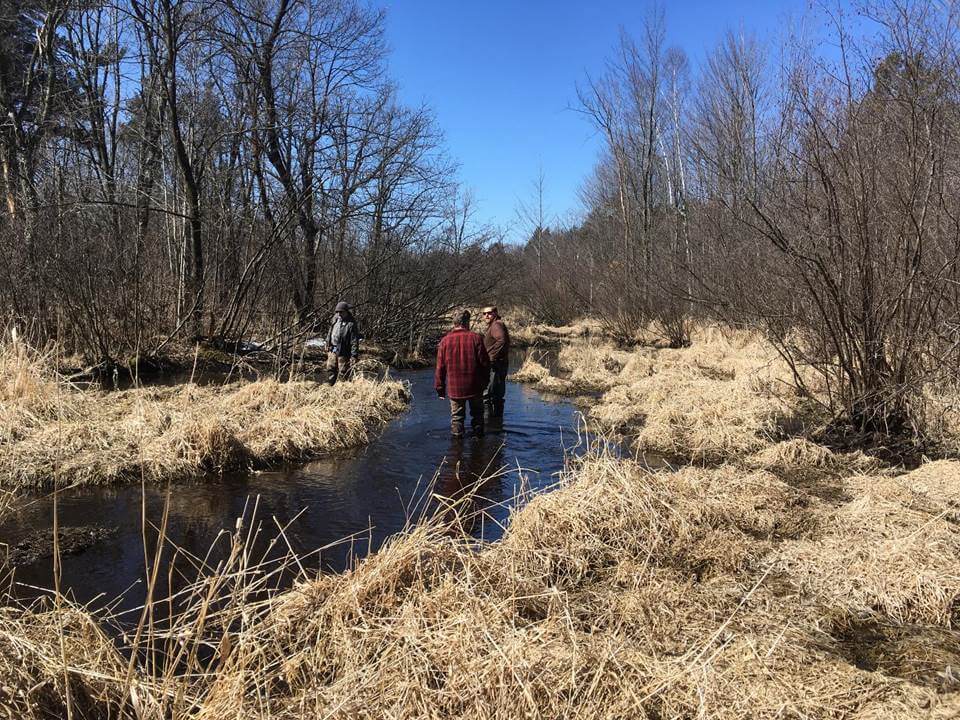
Agricultural Water Use in Central Wisconsin
Learn More >
Feeding America and Wisconsin’s Economy
Learn More >Irrigation and Conservation Practices
XThe future of our irrigated vegetable industry is ultimately dependent on our ability to balance the long term conservation of our water resources with the continuing productivity that is needed for economic survival. Increasing the efficiency of our irrigation practices and adopting conservation practices that use less water are key components to achieving this balance. Wisconsin farmers are experts on the complexities of the water cycle, groundwater recharge, and evapotranspiration (ET). That understanding is crucial to growing their crops and getting the highest yield with the least input of water and fertilizer.
Wisconsin potato growers have funded – and continue to fund on an ongoing basis – research projects aimed at enhanced conservation practices. We’ve worked closely in collaboration with UW scientists in the evaluation of deferred and deficit irrigation methods to conserve water. Deferred and deficit irrigation involve optimization strategies whereby irrigation water is applied during drought-sensitive growth stages of a crop. Among the useful results, deficit irrigation was effective in conserving water and had less than a 5% yield impact on corn production.
Low pressure irrigation systems are now the norm, using much less energy and less water than in the past. Drop nozzles are also used extensively, allowing the water to be applied closer to the ground, reducing the amount of evaporation that can take place.
Wisconsin’s potato growers routinely take petiole samples throughout the growing season to fine-tune their nutrient management programs. Petiole analysis is an important technique for diagnosing or predicting nutrient deficiencies in potatoes. It can also be used to monitor a fertilizer program and determine if adjustments to the program are required. Growers collect the youngest mature potato leaf from each of 20 to 30 plants in a systematic pattern across the crop area to be tested. Information is provided on the concentration of macro- and micro-nutrients in the petioles. This can be used to correct nutrient-related problems in the crop. Growers have also adopted spoon-feeding techniques, to apply multiple small applications of nutrients in accordance with the petiole readings and based on crop needs.
Add in a sophisticated watering schedule that utilizes soil moisture testing and computerized irrigation systems, and you have high-tech farms making wise use of water. Using grower-funded and research-based irrigation scheduling programs, a grower can use a soil probe to test the moisture of the soil and then use computer software to calculate what the crop needs. If it begins to rain during irrigation, the system is designed to pump only until a combination of rain and irrigation reaches that calculated crop need. Many irrigation systems can even predict the weather, and the system will not irrigate if the forecast exceeds the crop needs.
The Little Plover River Watershed Enhancement Project
XThe Little Plover River Watershed Enhancement Project is a multi-party effort convened by the Village of Plover and the WPVGA – with the goal of improving the health of the Little Plover River and the quality of life of the surrounding area. Restoring the health of the river requires an array of on-the-ground practices and voluntary landowner participation, and WPVGA is committed to utilizing protection, restoration and management practices to ensure the project’s long-term success.
The Wisconsin Wetlands Association, Wisconsin Wildlife Federation, Portage County Land and Water Conservation Division, and Wisconsin DNR make up the core team of project advisors. Project components include: water conservation and management; wetland restoration and drainage management; and farming conservation practices that include cover crops and precision nutrient application. Since the project started in 2017, the Little Plover River has been consistently flowing above the minimum 4cfs (cubic feet per second) rate as set by the DNR as the public rights stage.
The Little Plover River Watershed Enhancement Project has been a resounding success and a shining example of how collaboration can produce positive results for all stakeholders.
This following video highlights a wetland restoration project within the Little Plover River Watershed:
Click here to learn more about the Little Plover River Watershed Enhancement Project.
Producer-Led Watershed Protection
XThe 2021 DATCP Producer-Led Watershed Protection Grant is a partnership between the Central Wisconsin Farmers Collaborative, the Wisconsin Potato & Vegetable Growers Association, the Wisconsin Wetlands Association, and the University of Wisconsin-Madison Dept. of Horticulture. The mission is to support landscape-scale, producer-led water conservation practices in Wisconsin’s Central Sands Region. The effort involves six farms in the Wisconsin River/Little Plover River watershed, and we seek to promote innovative stewardship practices that benefit the watershed.
Participating farms:
- Plover River Farms – Nick Somers (Lead Farmer)
- Feltz Family Farms – Ken Feltz
- Firkus Farms – Lonnie and Mike Firkus
- Myron Soik & Sons – Curt Soik
- Okray Family Farms – Jim Okray and John Detlor
- Worzella & Sons – Steve Worzella
The WPVGA also funds several applied research projects led by Dr. Yi Wang, UW Professor of Horticulture, and Dr. Matt Ruark, UW Professor of Soil Science, looking at nitrate concentrations in irrigation water as well as evaluating the performance of multiple potato varieties in low nitrogen environments. The research results will provide important information for growers to help them develop improved nutrient management programs along with new varieties that use less nitrogen. This research also includes the study of slow release nitrogen products which reduce leaching.
In the spring of 2021, the WPVGA approved funding for equipment to assist with a research project conducted by Kevin Masarik, Extension Groundwater Education Specialist at UW-Stevens Point. The project is titled “The use of sensor arrays to understand water dynamics, solute leaching, and soil temperature below two fertilization methods of potato.” Ensuring that irrigation water is able to supply adequate water to the potato crop, while minimizing the potential for water to transport solutes like nitrate to groundwater is beneficial to both the grower as well as the environment. More information on the behavior of nitrate and other solutes in the soil profile during the growing season can be used to inform irrigation and fertilization strategies.

Robert Archambeau of North Central Irrigation (left) and Kyle Ostenson of Valley Irrigation describe some of the latest technology in aerial imagery to fine-tune irrigation systems.

A good crowd was on hand for the Central Wisconsin Farmers Collaborative Farmer-to-Farmer Irrigation Technology Field Day held on August 12 at Okray Family Farms in Plover.

Soil moisture sensors are explained by representatives of Roberts Irrigation Company at the Central Wisconsin Farmers Collaborative (CWFC) field day on August 12. Pictured are (L-R) John Detlor of Okray Family Farms, Mike and Lonnie Firkus of Firkus Farms (members of the CWFC), Chase Parr and Luke Abbrederis of Roberts Irrigation.

Nick Somers of Plover River Farms talks about some of the activities of the Central Wisconsin Farmers Collaborative. Somers is the lead farmer for the Producer Led group. Pictured are (L-R) Tracy Hames, Executive Director of the Wisconsin Wetlands Association, Randy Fleishauer of Plover River Farms, and Somers.
A Commitment to New Approaches and Technologies
XWPVGA is proud to utilize the latest technologies and systems that are environmentally friendly and protect our clean waters.
WPVGA has an ongoing collaboration on a research project with the UW Atmospheric and Oceanic Sciences Department looking at newer, more accurate and advanced methods of measuring evapotranspiration (ET). This project is being led by Dr. Ankur Desai and uses the latest technology of an eddy covariance flux tower system to measure ET in an irrigated vegetable field as well as using another flux tower system to measure ET in a nearby forest. Research results are being shared with growers to assist them in their irrigation management and scheduling regimes. Three years of data show that the ET rates are higher (reflecting greater water use) in the pine forest than the irrigated vegetable field. The DNR also used information from the Desai lab to accomplish tasks related to the lakes study component of 2017 Wisconsin Act 10. An additional study will take place this summer using eddy covariance flux towers to calculate ET values in non-irrigated corn fields.
The WPVGA continues to collaborate with the University of Wisconsin and the DNR on a new initiative to recognize and reward water conservation. The Wisconsin Water Stewards Program establishes a baseline of water stewardship practices and assists growers in making continuous improvements in the area of water conservation. Growers have access to a broad range of expertise to help determine the best way to manage and conserve water resources on their individual farms. This has also become a component of the WPVGA’s high-bar sustainability program known as Healthy Grown.
We’ve also helped with funding software maintenance to keep the Wisconsin Irrigation Scheduling Program (WISP) and the Agricultural Weather Data Service operational. Work is being conducted at the UW Biological Systems Engineering Dept. The existing WISP software tracks a daily soil water balance to assist growers with irrigation water management.
Agricultural Water Use in Central Wisconsin
XThe WPVGA is proud to bring together the people, organizations and expertise needed to foster the sustainable use of water resources. It is an example of collaboration involving state agencies, University of Wisconsin research scientists and the agriculture industry.
Central Sands Lakes Study
The WPVGA supports the concept of empowering farmers and community stakeholders to develop a cooperative plan to manage groundwater in the Central Sands region. WPVGA appreciates that the DNR has committed to identifying impacted resources and “envision[s] a flexible, economically reasonable and science-based approach” to Central Sands groundwater management.
A key point in the DNR’s study, "found that precipitation is the primary factor affecting lake level fluctuations." In an average year, the Central Sands gets over 32 inches of precipitation, and even the highest-use vegetable crop only uses about 22 inches of water. Accordingly, the vast majority of the time, agricultural irrigation will not have an adverse effect on lake levels.
All of the lakes in the study are currently at historically high water levels. Long Lake, which shows the most susceptibility to the effects of irrigation, is over four feet above the historical average and it would take several years of continually dry conditions before the lake level would fall back to even average levels.
Report from Wisconsin Institute for Sustainable Technology
In an interesting report, Paul Fowler, from the Wisconsin Institute for Sustainable Technology at UW-Stevens Point, studied the agricultural water use in central Wisconsin. He found that while use of water for agricultural purposes has increased over the last several decades, it may not be the cause of groundwater level fluctuation.
Read the full report here.
Feeding America and Wisconsin’s Economy
XWisconsin’s irrigated agriculture industry, which is a national leader in processed vegetables and ranks 3rd in potato production, is essential to the state’s economy. Specialty crop production in Wisconsin is valued at over $1 billion annually with an additional $5 billion value and 35,000 jobs estimated from economic activity associated with the food processing industry. That’s no small potatoes!
The Central Sands area is one of the most critical irrigated agricultural areas in the US and, since it is wholly dependent on groundwater, any disruption in the aquifer is of critical concern to the country’s food security. The WPVGA will continue to work diligently with all concerned parties to develop long-term, sustainable approaches to water use that will benefit everyone.
Contact Us
Have an idea you want to share? Know someone going the extra mile to protect our state’s waters? Drop us a line using the form below. We’d like to connect with you!
